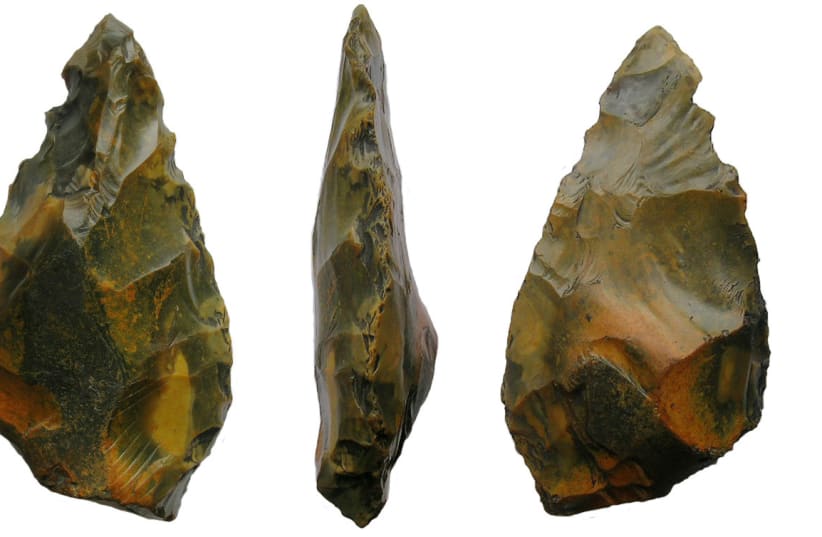A pair of giant handaxes, one of which is the third largest found in Britain to date, have been discovered by archaeologists from UCL Institute of Archaeology at an archaeological site in Frindsbury, Kent.
The archaeological excavations were documented in a report published by Internet Archaeology, an open-access archaeology journal.
The archaeological work was commissioned in advance of the construction of a new school, Maritime Academy. The academy has given its name to the archaeological dig site.
“The size of the handaxe and its distinctive symmetrical elongated tapering tip is typical of a type of handaxe known as a ficron,” the researchers write. According to Oxford Reference, the term “ficron” is applied “to describe long pointed bifaces with slightly curved sides and a well‐made tip.”
How big is the handaxe?
In addition to fitting into this categorization, the symmetrical flint tools are remarkably large. The larger artifact weighs over 3.5 pounds, is nearly a foot long, over 4 inches wide, and more than 2.5 inches thick.
This is large enough to make the tool unwieldy. In fact, in the report, the researchers note that it has “been suggested that very large tools [such as this] could have been used in a specialized way, such as being placed in the ground to cut material against, rather than held.”
Alternatively, the tools may have had uses beyond mundane practicality. According to the report, it has been posited that tools like these may have played a role in symbolic or cultural practices.
Senior Archaeologist Letty Ingrey suggests in a press release about the discovery that the tools may have been used in “demonstration[s] of strength and skill. While right now, we aren’t sure why such large tools were being made, or which species of early humans were making them, this site offers a chance to answer these exciting questions.”
The press release adds that the ficron handaxes were uncovered along with around 800 other stone artifacts that scientists estimate to be over 300,000 years old.

